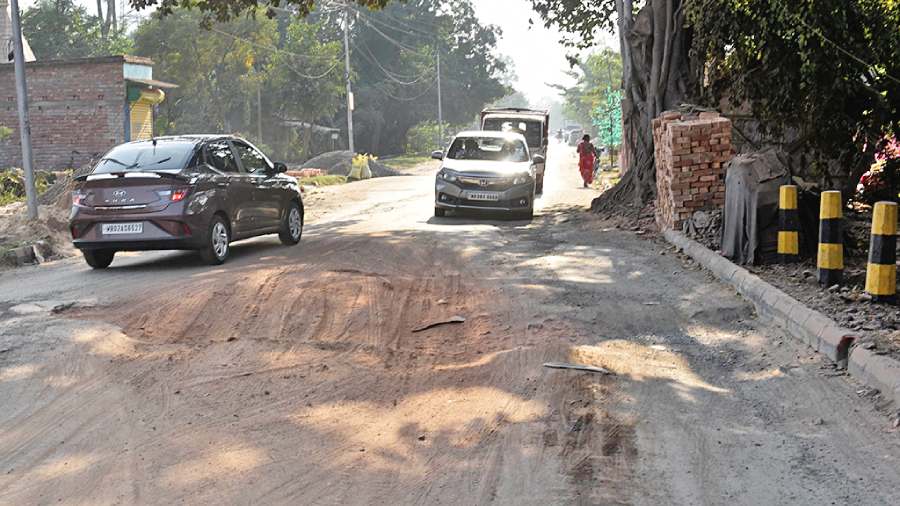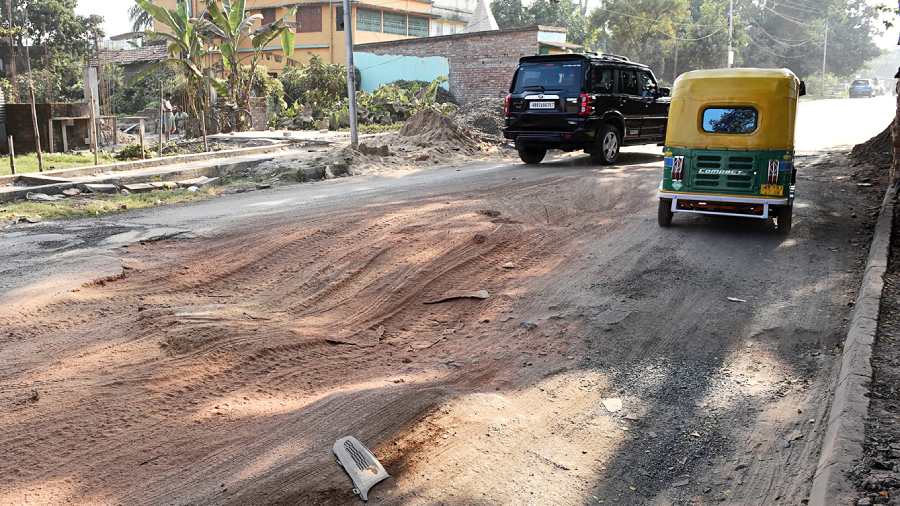Stretches of several roads in the city are in a battered state with dust rising from them as vehicles pass through them, contributing to the worsening air quality of the city, environmental scientists said.
The dust particles create a haze above the stretch which is broken and they can travel far along with the wind.
When they enter the upper respiratory tract, the dust particles can cause nasal congestion and irritation, said Abhijit Chatterjee, an associate professor with the environmental science section of the Bose Institute.
An engineer said that broken roads were not only hazardous, they were also contributors to poor air quality.
The Telegraph found a stretch of Chaubhaga Road, leading to Basanti Highway from Anandapur, in very poor condition.
In several stretches, the top layer does not exist any longer and the soil has become exposed. As vehicles run over the stretches, clouds of dust rise up and fill the air.
Several roads in Salt Lake are lying in a worn-out condition. The stone chips have disintegrated and lie scattered. A thick layer of dust has formed around the worn-out places. When vehicles move on the roads, dust rises up.
A resident of Behala in southwest Kolkata said many roads in the neighbourhood had worn out. “People cannot walk without covering their nose and mouth,” said the resident.
Some stretches of Kali Krishna Tagore Street, especially the edges, in northwest Kolkata’s Burrabazar too are in a poor state.
Several stretches of service roads along the EM Bypass are in a battered state. With many vehicles using the service roads, the air is always heavy with dust.

A battered and dusty Chaubhaga Road near the Chaubhaga Fish Market on Wednesday. Picture by Bishwarup Dutta
“The problem is felt more during the winter. A thick layer of dust also forms on the leaves of trees in such areas,” said a resident.
The dust particles are usually larger than PM 2.5 — particles that are 2.5 microns or less in size — but owing to a repeated collision they can break down into particles that are 2.5 microns or lesser in size, said Chatterjee.
PM2.5 are very fine particles that can enter the bloodstream and then travel to any human organ.
Chatterjee said that road dust was a significant contributor to the formation of PM10 pollutants.
PM10 are particulate matters that are larger than 2.5 microns but smaller than 10 microns. “PM 10 can cause nasal irritation and nasal congestion. Besides, the dust particles can further break down into smaller particles that are as small as 2.5 microns or less,” said Chatterjee.
Worsening air quality is one of the accompanying features of winter in Kolkata. The air quality has already dropped to very poor and poor in the air quality monitoring stations in Kolkata.
An official of the Kolkata Municipal Corporation (KMC) said they have already done some temporary repairs on Kali Krishna Tagore Street.
“We could work on the middle portion of the road. The sides of the road had trucks parked on them. We will soon work on edges,” he said.
“We will also start working on the road leading to Basanti Highway,” said the official.
